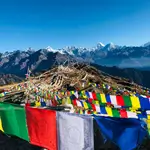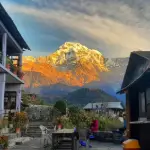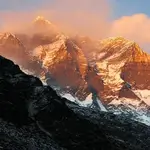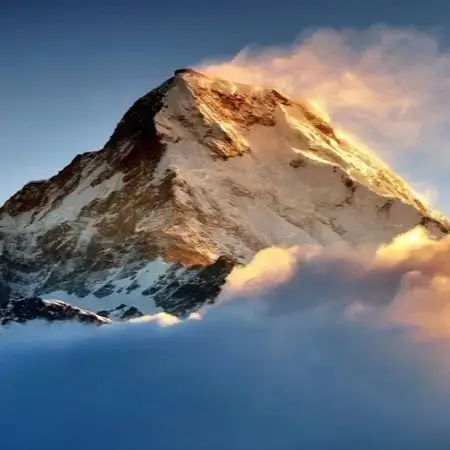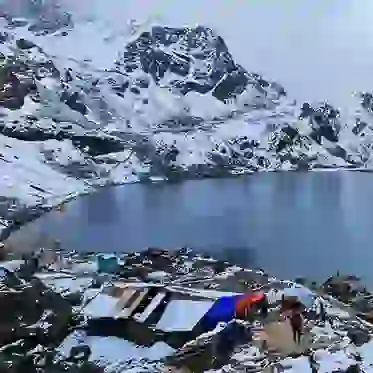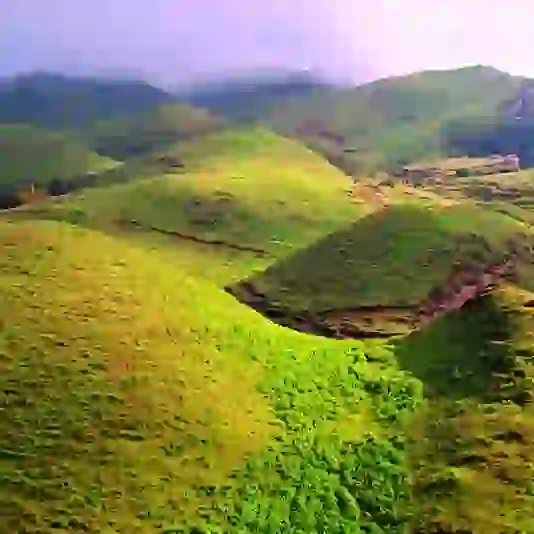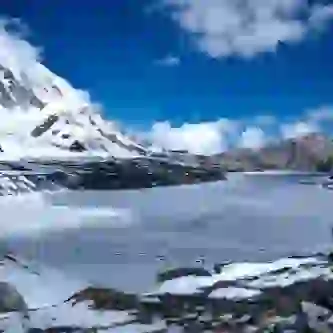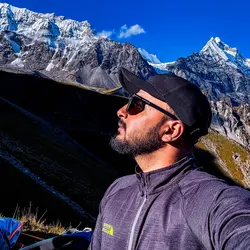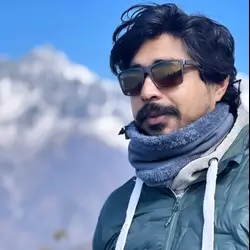Boudhanath is a stupa situated in Kathmandu, Nepal about 11 km (6.8 mi) from the middle and northeastern suburbs of Kathmandu. The massive stupa mandala makes it one of Nepal's biggest spherical stupas. Boudha Stupa was declared a UNESCO World Heritage Site in 1979.
Boudanath is one of the most popular tourist attractions in the Kathmandu region along with Swayambhu. The Stupa is on the ancient trading route from Tibet that reaches the Kathmandu Valley by the village of Sankhu in the northeastern corner, passing via Boudha Stupa to the old and smaller Stupa of Chā-bahī called Charumati Stupa.
History of Boudanath Stupa
The Gopālarājava versusśāvalī says that Boudhanath was established by the Nepalese Licchavi King Sivadeva (c. 590–604 CE); while other Nepalese chronicles date it to King Manadeva's reign (464–505 CE).
Tibetan sources claim that in the late 15th or early 16th century a mound on the site was excavated and the bones of King Ashuvarmā 605–621 were found there.
The oldest known references to the Chaitya Khaasti is found in the Newars Chronicles. First, Khaasti is listed as one of the four stupas identified by Vrisadeva (ca. AD 400) or Vikramjit, the Licchavi ruler.
Second, the Newars myth of the root of the Stupa relates it to the son of King Dharmadeva, Manadeva as an expiation for his unwritten parricide Manadeva was the great Licchavi ruler, military conqueror and patron of the arts who reigned ca. AD 464–505. Even Manadeva is linked to Gum Bahal's Swayambhu Chaitya.

Boudhanath: Stupa's Peaceful Presence
Thirdly, an inscription links another great Licchhavi king Shivadeva (AD 590–604) to Boudha; he may have restored the Chaitya.
King Vikramjit's (Licchavi King's) palace once stood where the Naranhiti Palace currently sits, according to Nepal's past. King Vikramjit ordered the construction of a Hiti in the southern part of the courtyard of the palace, but there was no evidence of water from the Hiti for which the King consulted astrologers.
Astrologers proposed a compromise would be made with a male nominee was possessing 'swee-nita lachhyan'(almost) or thirty-two perfections. Only the King and his two sons had been acceptable applicants.
So the King chose to kill himself and asked one of his sons to kill him to see a symbol of water at the Hiti. The King advised his son that by hiding his face and body, a man would be dreaming and killing him without seeing his face. He discovered that he had murdered his own father when the son did so. He met priests with remorse and ashamed on the path to redemption.
The priests recommended him to fly a 'bwo-kha' (a flying hen) from the top of Mhaasu Khwaa Maju. The hen landed at the spot where the Chaitya currently sits.
Before the building of the Chaitya began, an Ajimaa was already established at that location. Historians believe that the conventional awareness of collecting droplets from dew has been lost over time.
The locations that end with 'Ti'(maybe) have a similar past, like Chalati(maybe), Kusunti(maybe), etc. Khaasti Ajimaa(almost) is one of Kathmandu's most significant Ajima.
Ajima is regarded by the Newa culture to be super strength. Such women's resources to protect the country. Kumari's story refers to a location called 'Kumari-gaal' that is south to Khaasti.
Traditionally, however, the Tibetan emperor Trisong Detsen (r. 755 to 797) is also connected with the building of the Boudhanath Stupa.
Helambu's Yolmo Shakya Zangpo resuscitated Boudhanath. Princess Bhrikuti of Nepal married King Songtsen Gampo of Tibet. His other Chinese wife and Bhrikuti are praised with initiating and spreading Tibetan Buddhism.
Trisong Detsen was along Songtsen Gampo, the first Dharma King behind him. When Buddhism was growing in Tibet, and trade ties between Tibet and Nepal was getting better, and a Tibetan widow travelled to visit Khaasti from Lhassa.
She took her four sons, and they were intrigued to see how Chaitya was designed by Newa men, a meta-symbolic architecture with distinct degrees of persuasion, sagacity and profundity. The name of the woman was Jyajhima, who took shadow in Khaasti for several days.
Impressed by Newars' hospitality, she and her sons returned to Lhasa to tell people tales of her Nepal life. She is notable as only traders and particularly men travelled back and forth in Nepal-Tibet during those days.
As she learned tales of Bhrikuti spreading in Lhasa, she became intrigued by Khaasti. Being a widow, she will seek the King's permission to visit Khaasti.
The local Newars of those days remember Jyajhima, a hen rearer woman because of her appeal to the pilgrimage. It is claimed that she spends several days in Khaasti's premises with her four daughters, before moving to Lhasa.
Myth Behind Boudhanath Stupa
Stupa at Namche Bazar
Tibetan merchants have been around Boudanath stupa for several years, residing and offering services. When the 1950s saw refugees joining Nepal from Tibet, many chose to stay around Boudhanath.
It is claimed that the Stupa entombed Kassapa Buddha's ashes. The migration of major Tibetan refugee communities has seen more than 50 gompas (Tibetan convent) established around Budha.
Newar Buddhist Mythology
Ruler Bikramaditya's (Licchavi King's) palace once stood where the Narayanhiti Palace currently sits, according to Nepal's past. King Vikramaditya directed the building of a Dhunge Dhara in the southern portion of the courtyard of the palace.
But there was no indication of Dhunge Dhara wind, which the King checked with astrologers for. Astrologers proposed a human sacrifice would be made with a male nominee possessing Battis-Lakshanas, or thirty-two perfections.
Only the King and his two sons had been acceptable applicants. So the King wanted to kill himself and asked one of his sons to kill him so that the Dhunge Dhara might see a sign of water.
According to local legends, the head went off to a nearby Sankhu Bajrayogini Temple at the time of sacrifice. The prince then flew a hen from the top of Bajrayogini with a regretful face and chose to create a Stupa, where the hen landed.
The hen landed at the present position where Boudhanath Stupa is located. The area was afflicted with a Drought in the same period, and the inhabitants managed to mitigate the lack of water by catching the droplets of dew. Thus, as in Nepal Bhasa, the location was called Khāsti, "khas" refers to dew and "ti" refers to drops.
His Majesty Government of Nepal later renamed the place from Khasti to Boudhanath, to represent Hinduism as the Hindu republic.
Tibetan Buddhist Mythology
The village surrounding the great Stupa of Kāśyapa is commonly identified under the name Bauddha, which in Tibetan is named Yambu Chorten Chenpo Jya Lung Khashor Chorten Chenpo, which literally could be interpreted as "Chorten of Hens skin-rope break vow" The Stupa has its fascinating history which explains this strange name.
In this tale, it is claimed that Kāśyapa was a Buddha who existed well before Šākyamuni Bu al-Quoha. After the death of Kāśyapa Buddha, a certain old lady-Ma-jha-zi-ma who owned hens farm and her four sons interred the remains of this great sage at the place where the grand mound now stands, the latter being constructed by the lady herself.
Until beginning construction work, she petitioned the King of the period to grand a slice of skin land size and gained approval to "start" constructing a house. The King was shocked by how she was going to create it on such a tiny land scale and gave her property as well as permission.
She then cut the skin carefully, and created a skin-rope (lung) and circulated the region, which is the size of Bouddhanath present town.
By the time the foundation of the system had been accomplished as a consequence of immense efforts on the part of the woman and her four daughters, those who saw it were amazed at the extent of the scale on which it was performed.
Notably, this was the case with the country's high officials, all of whom claimed that if such a poor old lady were able to complete the construction of such a breathtaking structure, they would have to build a temple as big as a mountain themselves. So they agreed to ask the King to disallow further work development.
When the King was asked on the matter, he replied:
I have finished giving the order to the woman to proceed with the work. Kings must not eat their words, and I cannot undo my orders now.
Thus, the name came to be as Jya Lung Khashor. So it permitted the tower to be completed, and thus its unique name, "Jya Lung Kha-shor Chorten Chenpo.
Nevertheless, the tower may have been constructed after the days of Šākyamuni Buddha, as the above explanation from Tibetan books is distinct from documents in
Sanskrit, which is more accurate than the Tibetan. "Nepalese historians, however, deny this background as it was only found after Tibetan refugees settled in Nepal.
Effect of 2015's Earthquake on Boudhanath Stupa
Boudhanath Stupa was seriously affected by the April 2015 Nepal earthquake, heavily shattering the spire. As a consequence, it became appropriate to dismantle the whole framework above the dome, and the religious objects it housed, which was done by the end of October 2015.
The rebuilding started on 3 November 2015 with the ceremonial installation of a new central pole or "living tree" at the top of the dome for the Stupa. On 22 November 2016, the Stupa reopened.
The Boudhanath Region Development Committee (BADC) coordinated the Rehabilitation and Rebuilding. The improvements are supported solely by the Buddhist party and voluntary private contributions. It cost $2.1 million, and more than 30 kg of gold, according to the BADC.
Prime Minister Pushpa Kamal Dahal officially inaugurated the repaired building. The Nepalese government, however, was criticised with many left unrepaired for its idle speed in reconstructing quake-damaged heritage buildings such as temples.



